|
Co-sponsors of the 2023 Winning Out
Certificates


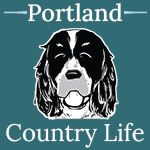
| |
Learning to recognise and live
with stress
 We
can not give our dogs a totally stress free life, nor would we want to. Stress in moderation is
not harmful. However, problems with dogs arise when they are subjected to many forms of stress
in their every day life, and they are not allowed to recover from it. You may think that you
are the only only stressed out on the agility course, but your dog feels to pressure too. Dog
behaviourist Aileen Clarke investigates the causes of stress and how to relieve it. We
can not give our dogs a totally stress free life, nor would we want to. Stress in moderation is
not harmful. However, problems with dogs arise when they are subjected to many forms of stress
in their every day life, and they are not allowed to recover from it. You may think that you
are the only only stressed out on the agility course, but your dog feels to pressure too. Dog
behaviourist Aileen Clarke investigates the causes of stress and how to relieve it.
The effects of stress are cumulative. Imagine a glass
into which water is being poured. When it is full, we stop pouring or it would overflow. If our
dog is continually being subjected to stress, and not allowed to recover from its effects then
like the glass full of water, the dog become full of stress and this stress will overflow. We
will then have a dog that is displaying a multitude of problems such as constant barking,
health problems, aggression, chewing, and restlessness etc.
What are the causes of stress in
dogs?
Your dog can become stressed for many reasons. This list is not
exhaustive - and you may be able to add others that apply to your own circumstances - but it
gives a good idea of what causes our dogs to be stressed, and some of these things have a
greater effect on some dogs than on others.
Here are just a few examples:
|
Agility
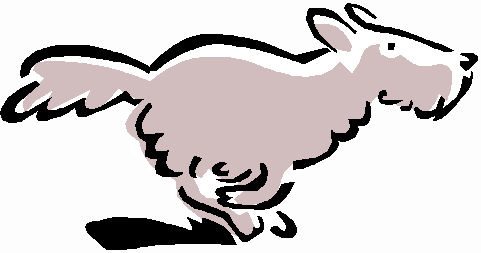 |
- Queuing by the agility ring
- Meeting other dogs, and handlers
- Travelling including trips in the car
- Exciting ball games in the exercise area
- Too much training
- Too many commands
- Lack of consistency in training
- Training classes
|
At home

|
- Being left alone
- Being hungry or thirsty
- Not being able to go to the toilet when desperate
- Being left alone in the garden, to attend to
toilet matters
- Violence, anger or aggression in environment
including family arguments
- Children!
- The postman, dustman, milkman or other regular
visitors
- Too much or too little exercise
- Change of routine
- Pain and illness
|
|
Outside
 |
- On lead including meeting other dogs, pulling or
jerking, pushing dog down etc.
- Weather - i.e. windy days, thunder, too hot, too
cold
- Loud or sudden noise including fireworks
- Too many exciting walks including lots of free
running
- Bitches in season
- Never being able to relax in peace, always being
disturbed
- Canine conflict
|
|
Special occasions
 |
- Christmas and other holidays
- A new 'baby' - human or dog
|
Fight or flight
When faced with a dangerous situation the dog has four choices -
either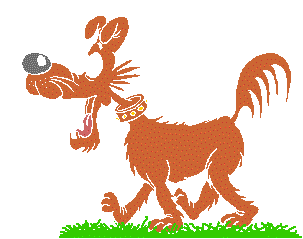
- Fight
- Flight
- Freeze
- Faint
It will depend on his character or the situation which
one of these it opts for.
How stress affects the dog
Five to fifteen minutes after a 'situation' occurs, the production of
adrenaline is at its peak. At the same time, stomach acids increase, causing upset stomachs,
and sexual hormones rise. Defense mechanisms such as Endorphins flood the body, making the dog
can react more aggressively and ADH (anti-diuretic hormones) will be produced.
After about a quarter of an hour, hormones and acids
start to decrease. Depending on the severity of the situation it can take from two to six days
- or longer - for the adrenaline levels to return to normal. However, if the dog is subject to
continual stress then the level of adrenaline may NEVER return to normal.
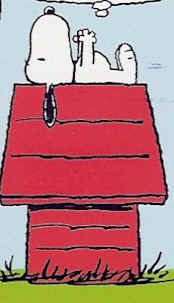 Adrenaline
to the rescue Adrenaline
to the rescue
Adrenaline is the stress hormone. It is important for both animals
and humans if they find themselves in dangerous situations. It works like this.
The rise in adrenaline triggers the defense mechanisms –
the survival hormones. The dog will become more aggressive as endorphins will flood his body,
these endorphins will also block pain and give him the ability to run faster and fight harder
if he needs to. So it is not wise to try to separate two fighting dogs by hitting or kicking
them, it actually makes the dogs fight more aggressively.
The stimulation of ADH ensures the water balance in the
dog’s body is maintained, and stress causes these hormones to work overtime. Dogs only sweat
through their pads, and they regulate their body temperature by panting, so sweaty pads and
excessive panting can be a good indication that the dog is stressed. It is the production of
this hormone that ensures that the handler will be desperate for a wee the minute she reaches
the start line, too!!
A dog with a constantly high stress level will be more
prone to medical problems such as stomach, allergy and heart trouble. They will be faster and
more violent in their defense, and their reaction to outside influences will be a lot faster
and more aggressive.
How to recognise signs of stress in
our dog?
|
Physical |
Behaviour |
- Dandruff – caused by muscular tension
- Whites of eye become very red
- Fur that is hard, breakable and standing on end
- Looking unhealthy
- Shivering
- Scratching
- Loss of appetite
- Looking nervous
- Allergies
- Diarrhea
- Total shut down of systems
- He smells bad – both mouth and/or body
- Panting
- More frequent need for the toilet
|
- Restlessness
- Over reaction to things happening e.g. doorbell
- Barking, howling, whining
- Shaking
- Biting himself
- Lack of concentration
- Inappropriate biting or chewing e.g. furniture
- Licking at himself
- Chasing his tail
- Fixation on things
- Behaving aggressively
- Displacement behaviours - doing something other
than what you have asked him to do
- Use of calming signals
|
Chewing and barking releases endorphins which make the
dog feel better. Then we get stressed and behave differently towards our dog.
Stress and performance
If we take a very exaggerated hypothetical situation, it is easy to
see how the cumulative effects of stress affect the performance of the agility dog, or any dog.
George and Percy are fictitious. They are not based on one particular person or dog, but over
the years I have seen many different dogs and handlers who remind me of George and Percy!
 How
can we relieve our dogs’ stress? How
can we relieve our dogs’ stress?
Poor Percy. The future is looking very bleak for him, but how
could this have been avoided?
When we realise that it is possible that stress is
causing a problem in our dogs, then we need to identify those things that are causing the
stress. We will not be able to eliminate all stress from our dogs’ lives, and even if we
could this would not necessarily be a good thing to do.
When we have identified the causes of stress, then
we ensure that our dog is not being subjected to an overdose of stressful situations.
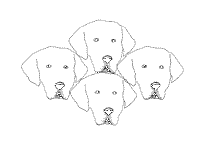
Some simple ideas are:
- Change the environment and routines.
- Stop using harsh methods of training, there is
no place for violence and pain in dog training, and there is no excuse for it. It is
totally valueless.
- We can teach ourselves to see, identify and use
calming signals
- We can avoid putting the dog in a situation of
hunger, thirst, heat, extreme cold, and lack of toilet opportunities.
- Find a balance of exercise and activity, too
much and too little can both cause problems.
- Let the dog be part of the family as much as
possible. Dogs cannot thrive on their own for long periods of time. They are social
animals and need to be part of a pack.
- Closeness, touching, and massage will all
release stress. (For people as well as dogs!!)
 Observe
and understand your dog. Observe
and understand your dog.
Learn to identify the times when he is finding life stressful,
then intervene, and remove him from the situation if you can, or give him the opportunity
to regain his serenity when the situation is over.
The best way to do this is to limit hyper activity
times, such as agility, chasing balls or rushing around, to just two or three times a
week. Then let him have plenty of sleep for the next couple of days before he does
anything else exciting.
With particular regard to
agility...
Don’t fall into the trap of thinking that flying round the exercise area after a ball
will calm him down before you take him into the ring, in fact it will have the opposite
effect. It will raise his adrenaline levels and make him more hyper-reactive to any
situation he finds himself in.
Be a role model to your dog. If you react calmly to
situations then your dog will follow suit. If you scream and shout in stressful
situations, your dog will decide you are out of control and take over the leadership
role, usually with disastrous results.
Be aware that when he is on the lead your dog has
lost the flight option.
- Don’t join an agility queue if this causes him
anxiety, give him the space he needs to feel comfortable with the situation.
- Give your dog plenty of space when meeting other
dogs and people at all times.
- If you jerk his lead and tell him in a cross
voice to 'leave it,' you are telling him that meeting other dogs and people is going to
be a painful experience that makes you cross.
Can you blame him if he then tries to prevent this
painful experience from happening by barking or lunging aggressively at other people and
their dogs in order to get rid of them?
Never leave your
dog alone with children. They will not recognise the calming signals that he uses, and
children can be very unpredictable.
 For
most dog owners their relationship with their dog has been a one-way communication – they
demand and the dog has to respond – or else. For those of us that really want to know and
understand our dogs this is not enough. Given the chance dogs have an amazing ability for
conflict solving, helping each other and helping us. Think of the hundreds of dogs that
go to agility shows, with no problems at all, and ask yourself if this is thanks to them
or thanks to us. Dogs are born to a life of unselfish communication and co-operation, and
will try to resolve conflict situations whenever they are allowed to. We need to help
them achieve this every way we can. For
most dog owners their relationship with their dog has been a one-way communication – they
demand and the dog has to respond – or else. For those of us that really want to know and
understand our dogs this is not enough. Given the chance dogs have an amazing ability for
conflict solving, helping each other and helping us. Think of the hundreds of dogs that
go to agility shows, with no problems at all, and ask yourself if this is thanks to them
or thanks to us. Dogs are born to a life of unselfish communication and co-operation, and
will try to resolve conflict situations whenever they are allowed to. We need to help
them achieve this every way we can.
And Percy...
Even though he is a fictitious dog I could not leave him to that dreadful fate. He was
given another chance. He went to live with a family who treated him with respect, love
and understanding. His leg healed and in time he overcame his stress problems. He still
does agility, and loves it. Who knows, perhaps he will be next years winner at Olympia. |
The Tale of George &
Percy
How to Ruin a Good Dog!
 George
works throughout the week, while Percy, his three year old Collie, stays at home. While
George is working, it is Percy’s job to guard the house against the postman, the dustman,
the old biddy and her cat next door and everyone who walks past. George
works throughout the week, while Percy, his three year old Collie, stays at home. While
George is working, it is Percy’s job to guard the house against the postman, the dustman,
the old biddy and her cat next door and everyone who walks past.
So by the time George gets in exhausted from work,
Percy is exhausted from his day’s work too, and the nosy old biddy next door has
complained about Percy barking all day again. Now
George is cross with Percy again. George is even more
cross with Percy when he finds out that he has been chewing the carpet
again. Then George steps in the deposit that Percy has
left by the kitchen door. George shouts at Percy, then he cleans up the mess and stomps
off to get changed for agility practice.
The car ride to the agility field is really
exciting. Percy barks all the way there. George spends the journey screaming at Percy
again. He tries out the water pistol that someone
suggested, and he nearly runs the car off the road while he is aiming it. This frightens
Percy, and at least he is quiet for a moment. Then he starts barking again, but he keeps
a wary eye on George’s hands.
 George
takes Percy to watch the class before his. Percy starts lunging on his lead every time
someone else’s dog goes round the course, so George decides to take Percy for a quick
walk before his class. George throws a ball for him to try to run some of his energy off.
After ten minutes playing with a ball, Ethel and Munchkin, the little Papillon, come into
the exercise field. Percy rushes up to Munchkin and grabs him without any warning. George
rushes over to the dogs and screams at Percy. He thumps and kicks his dog, but that
doesn’t work as the endorphins flooding Percy’s body ensure he can’t feel a thing, so
George grabs hold of Percy, and tries to pull him off poor little Munchkin. Ethel rushes
up and screams at George telling him how stupid he is. George
takes Percy to watch the class before his. Percy starts lunging on his lead every time
someone else’s dog goes round the course, so George decides to take Percy for a quick
walk before his class. George throws a ball for him to try to run some of his energy off.
After ten minutes playing with a ball, Ethel and Munchkin, the little Papillon, come into
the exercise field. Percy rushes up to Munchkin and grabs him without any warning. George
rushes over to the dogs and screams at Percy. He thumps and kicks his dog, but that
doesn’t work as the endorphins flooding Percy’s body ensure he can’t feel a thing, so
George grabs hold of Percy, and tries to pull him off poor little Munchkin. Ethel rushes
up and screams at George telling him how stupid he is.
Too late
Munchkin has been bitten, so Ethel rushes him to the vets
threatening George with legal action as she goes. George is cross with Percy again. He
smacks Percy round the head. That will teach him not to attack little dogs thinks George.
He tries to put Percy on the lead but Percy remembers the smacking, the water pistol and
stays well back, walking slowly up to George to try to calm him down. George screams at
Percy for being so slow, grabs him by the scruff, which frightens Percy so he turns round
and air snaps at George. Don’t you get aggressive with me says George and gives him
another wallop round his head. That’ll teach him not to bite me thinks George.
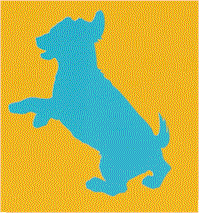 Time
to do agility Time
to do agility
Percy is high as a kite, contacts - what contacts - says Percy. He knocks pole after
pole, and demolishes everything he meets. He doesn’t even attempt to slow down when he
goes through the rigid tunnel, and wallops his shoulder on the bend, but again the
endorphins prevent him feeling anything.
George has a quick look at him but he isn’t limping
so they carry on. Time for more contact practice. George is determined that Percy is
going to get his contacts this time, so he grabs him as he comes down the Dog Walk and
screams at him to stay on it. Percy is frightened so he air snaps at George again,
jumping off sideways. He rushes to the side of the field and has an explosive bout of
diarrhea. George is cross again, and tells the instructor that he has been for a walk –
honestly. Everyone smirks. George is really cross now as he puts Percy on the lead and
drags him across the field so he can clear up the mess.
He take Percy home, feeds him and packs the caravan
ready for the show at the weekend. It’s a long journey to the show, and Friday night is
always a rush. Saturday morning sees George in the exercise area with Percy, throwing a
ball to take the edge off his enthusiasm. He is really not listening to what George says,
and luckily George manages to prevent him attacking another dog that comes too close.
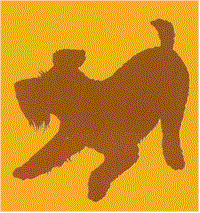 'The first class for Percy is Open Agility. Pity thinks George as Percy does better with
a Jumping round first. Queuing is a nightmare. Percy leaps about, barking his head off.
He growls at any dog that comes near him.
'The first class for Percy is Open Agility. Pity thinks George as Percy does better with
a Jumping round first. Queuing is a nightmare. Percy leaps about, barking his head off.
He growls at any dog that comes near him.
George brings out the water pistol again. He misses
Percy and squirts a poor little mongrel that was cowering next to them in the queue.
George shouts at Percy and fires the water pistol again, hitting Percy as he is looking
at the little mongrel. Percy associates the little mongrel with George getting cross and
firing the water pistol at him, so he thinks George wants help in sorting this pesky
little critter out. Percy lunges at her. The owner of the mongrel screams at George and
leaves the queue. She will never be able to queue with her dog again. George is cross so
he yanks at Percy’s lead, pulling the check chain tight, and tells him off again. He
forces him into the down and puts his foot on the lead to keep him there. It is very
painful for Percy and he can hardly breathe.
On the start line George says wait, but Percy goes.
He knocks the first three poles down, flies the see-saw and goes the wrong way through
the tunnel. He hits the A frame so fast that he damages a tendon, but the endorphins
flooding through his body ensure that he can’t feel the pain. Another jumping combination
and Percy goes the wrong way again. The rest of the course is a nightmare and when they
reach the final straight Percy goes flying out of the ring and attacks a German Shepherd
that is going past.
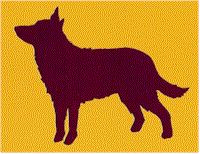 Trouble
& strife Trouble
& strife
George takes Percy home in disgrace and when he gets home he opens his post to find a
letter from Ethel’s Solicitor. She is suing him. The owner of the German Shepherd
complained to the Show Secretary and the case is forwarded to the Kennel Club. After the
Kennel Club hearing George is banned from competing in Kennel Club events for five years.
George has had enough. He sends Percy to the rescue kennels for rehoming, and takes up
golf.
Poor Percy
Being in the rescue kennels causes him a lot of stress. The
centre manager knows that Percy is really a lovely dog, but his recurring stomach
problems and damaged tendon mean that finding a new home for him will be very difficult.
So reluctantly she calls in the assessor to make the decision whether or not Percy should
be put to sleep.

- The end -
(Or is it?)
|
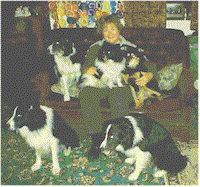 About
the Author About
the Author
Aileen Clarke has five dogs and
has competed successfully in Agility, Breed and Flyball.
She has recently started her own business, Fellandale Dog
Training. At present she has over 70 people registered with her and the major part of her work
is helping families deal with problems they are having with their dogs. She also does pet
obedience classes, fun training, training walks and gives talks to clubs and groups about
canine understanding and communication. All the training is done through kindness and positive
association, and she has many associates including a Tellington Touch practitioner. Her
long-term aim is to set up a Canine Education Centre in County Durham.
Credits: Cartoon graphics thanks to Fuzzy Faces
http://www.fuzzyfaces.com, Pedigree Masterfoods, Peter
Lewis, Charles Schultz and Kim Blundell.
Feedback
From Yvonne East...
Really enjoyed Aileen Clarkes article Stressed Out. Got me
thinking about all the situations that my dogs could feel stressed in, and what we can do to
reduce this stress. I realise that when competing I get
very wound up myself which communicates itself to my dogs. The article certainly brought it
home to me, that the behavior my dogs display in the ring is all down to myself, so I must calm
down!
(25/01/03)
From Julie Botl
I thought this was an excellent article. I was pleased to find I am
already doing many of the things she suggests e.g. my nervous rescue dog is far less stressed
if she does not queue. I was interested to see the author is a Tellington Touch practitioner
because by far the best stress reduction technique I have found for my dog is
Tellington Touch!
(04/11/02)
From Claire White
After reading Aileen Clarke's excellent
Stressed Out article, it got me to thinking... Do my dogs get too much or too little
exercise. Do I put them under too much stress??
I have two terriers (Penny and Archie) and a hound cross
(Be-bop). Penny and Be-bop do agility and flyball and Archie does agility when it suits him!!
They also get on average two hours a day of free running in the Forest - some days they get
maybe more. As we train at class twice a week and then some at home, am I training them too
much.
I also work full time so could it be guilt from leaving
them all day that I do so much, when a lot of my friends who don't work, don't give their dogs
as much exercise and attention?
As I said - great article, and very thought provoking.
(21/04/02)
From Diane Price
Excellent article! Very thought provoking.
(21/04/02)
| |
|

 Adrenaline
to the rescue
Adrenaline
to the rescue How
can we relieve our dogs’ stress?
How
can we relieve our dogs’ stress? About
the Author
About
the Author